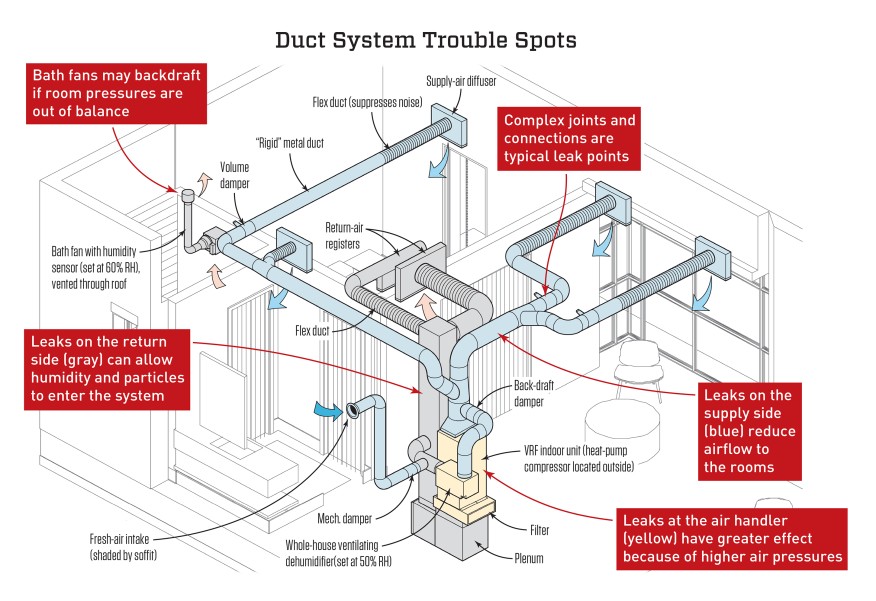Duct Leakage? New Press In The Journal Of Light Construction
Check out the latest press Positive Energy's getting in the Journal Of Light Construction. Senior Editor & Author Ted Cushman explores the intricacies of high performance HVAC design, installation, and performance testing - and he explored it with us on one of our project collaborations with Matt Risinger's company Risinger & Co.
"A home’s air conditioning system, Kristof Irwin, P.E., likes to say, is like the lungs of the building: As the home’s air supply, the HVAC’s proper functioning is vital. And while the air conditioner itself will likely be replaced in 15 or 20 years (and can certainly be repaired any time), the ductwork is different, Irwin points out: Buried in the ceilings and walls, many duct runs are inaccessible. Once installed, ductwork is what it is—and it may have to serve for the lifetime of the building. As Irwin puts it, “The ducts are infrastructure.”
Irwin is the founder and principal of Positive Energy, in Austin, Texas. Along with providing other services, his company designs high-performance HVAC systems, typically specifying high-efficiency variable-speed compressors and air handlers, paired with dedicated dehumidification and ventilation equipment. Irwin uses the industry standard ACCA Manual J to estimate heating and cooling loads; ACCA Manual D is used to specify the building’s ductwork."
"In a brand-new home, Sean Harris says, a by-the-book design should perform as intended—as long as it’s installed correctly. Anybody can make a mistake, though, he notes—and in any case, last-minute changes that affect the ductwork are common. “Very rarely does a job go exactly as planned,” Harris notes; for this project, Positive Energy had to modify the distribution systems for several zones after a preliminary walk-through, to adjust to changes in structural framing and truss configurations. And since the systems can’t be easily modified once drywall is complete, it’s important to verify the effect of the changes while ducts are still accessible."
The drawing above, which JLC adapted from one of our design renderings, shows the anatomy of a typical duct system connected to a high-performance air conditioner. You'll see we specified dedicated dehumidifying equipment, a ducted fresh air supply, and bath exhaust fan details in addition to the air conditioner and its ducts. The design calls for metal ducts, except for short runs of flex duct at registers to reduce noise. If the design is correctly installed, testing should not reveal any trouble.
“In our industry,” says Harris, “there are still some people who don’t understand how duct design works. They think that a rule of thumb from the 1980s is still how it’s done. But that’s not the case. For airflows, fluid dynamics works, and there are simple software tools out there that accurately predict how much air you are going to get out of that duct. And when it is installed exactly as we design it, we actually get that delivered performance.”

